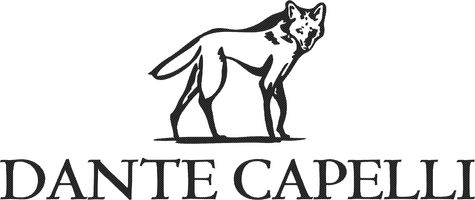Why We Are Different ?
When people ask us this question, they expect an answer that’s ready at the tip of our tongue. But answering it is not that simple, as many factors contribute to making us unique.
Most products on the market use chrome-tanned leather, which is cheaper and of much lower quality, along with fragile hardware and machine stitching. We’re doing something very different. By using only the best full-grain leather tanned with plants and solid brass hardware, we are creating modern items that follow the old-school style our grandparents used — a truly rare “old school” style these days.
We Use Only the Top 1% of Leather
The leather we use is so rare that only 1% of all leather produced in the world meets our standards. There are 4 key factors involved:
Type of Cattle We use certified Brazilian cattle to make our leather. These are large, healthy bovines that produce strong hides from specific breeds raised in Brazil. A large portion of leather sold comes from inferior breeds, older or thinner cattle. You know what happens to your skin when you’re old and thin? It’s the same for cattle.
All of these factors combined result in extraordinary leather. This kind of leather costs about 3 times more to produce, but it’s worth it.
Leather Grain: Full Grain Leather We only use full-grain leather for our products, which means the leather retains all the layers of the fiber. This is important because most products on the market are made from "genuine leather," which is just the top layer of the hide and generally the weakest part. Full-grain leather has all its layers intact and is the strongest, most natural form of leather. Simply put, full grain leather is the best you can get.
Tanning Method: Vegetable Tanned Leather Our leather is also 100% vegetable tanned, meaning it undergoes a specific tanning process that very few products on the market use. Vegetable tanning refers to the use of organic plant materials like tree bark in the tanning process. It’s the oldest form of leather tanning and has been around for centuries. It’s also the most natural and environmentally friendly tanning method. Vegetable-tanned leather tends to be thicker, have more body, and age beautifully — developing a rich patina over time.
But less than 10% of leather in the world is tanned this way. Most leather is tanned with chromium, using chemicals that make it much cheaper and faster. This can be done in a few days, unlike the six weeks it takes for vegetable tanning.
Note that vegetable tanning is not necessarily the same as 100% vegetable-tanned leather. Some companies use a combination method, primarily using chromium tanning with a "sprinkle" of vegetable tanning at the end. So if you want vegetable-tanned leather (and you should!), make sure it’s 100% vegetable tanned.
The Smell Vegetable-tanned leather has that classic, wonderful leather smell. In contrast, chrome-tanned leather smells “chemical.” Many chrome-tanned leather products need to be aired out when you first acquire them. Not vegetable-tanned leather. The scent is distinct and intoxicating, and only those who’ve experienced it can truly describe it. If you haven’t tried it yet, you’re missing out.
Solid Brass Hardware
We use real solid brass hardware, a noble metal alloy that is rarely used today — but it’s how things used to be made. It costs about 6 times more than the cheap painted metal hardware commonly used by accessory companies due to its low cost. Brass is difficult to produce and harder to find. But it’s worth it because it’s extremely durable, corrosion-resistant, strong, hypoallergenic, ages beautifully, and looks great with leather.
Ultra-Resistant Waxed Thread
Often, the thread or stitching technique is overlooked or goes unnoticed because it’s tedious to think about stitching threads. But without good thread, the item won’t last.
Hand stitching is done with the same technique used to make saddles: we use two intertwined needles to weave the stitches, making the stitching much stronger than machine stitching.
Without high-quality thread, no matter the stitching technique, it will never be right. That’s why we use thick, durable waxed thread in our hand stitching. However, hand stitching isn’t always possible, such as for items made from canvas. In these cases, we use bonded polyester thread, commonly used in boat sails, and we super-size the thread gauge, which significantly increases the strength.
Polished Edges
The finish is exceptional: for any exposed leather edge, we use a high-quality edge finishing process, using only natural materials. The result is a well-painted edge that enhances both the durability and the aesthetics of the product. It’s a costly and labor-intensive process, but finished edges are one of those important details. We use a blend developed by us, primarily made of natural oils and beeswax, unlike other brands that use glue and rubber mixtures.
We Prioritize National Raw Materials
The entire process is carried out with locally sourced materials. We only import items that aren’t commercially available in Brazil or that we can’t produce locally.
Handmade by Artisans
We combine ancient manual processes with technology to achieve a meticulously crafted product built to last. Our products are made in our workshop located in Serra da Cantareira, São Paulo, Brazil. With a mission to deliver the highest quality at a fair price, we take great pride in our products.
